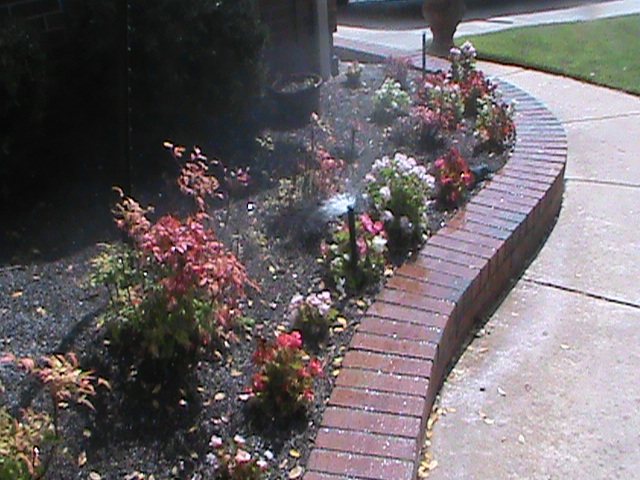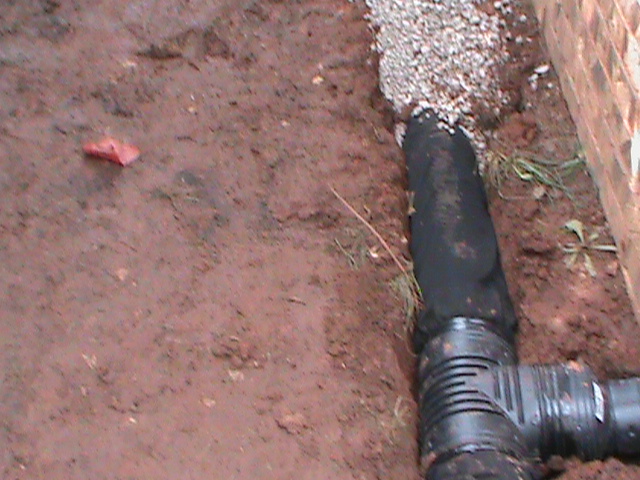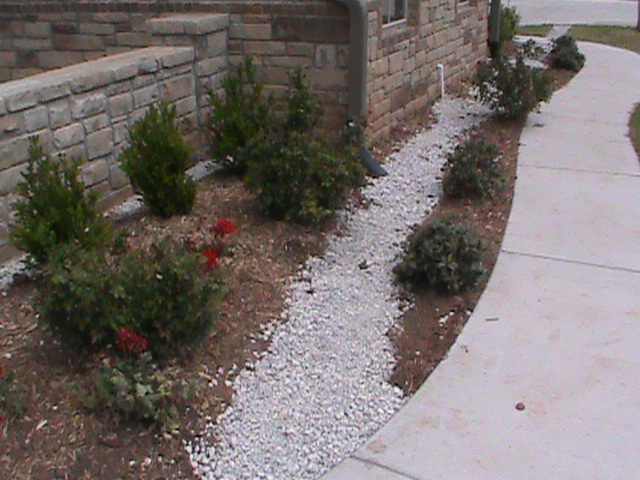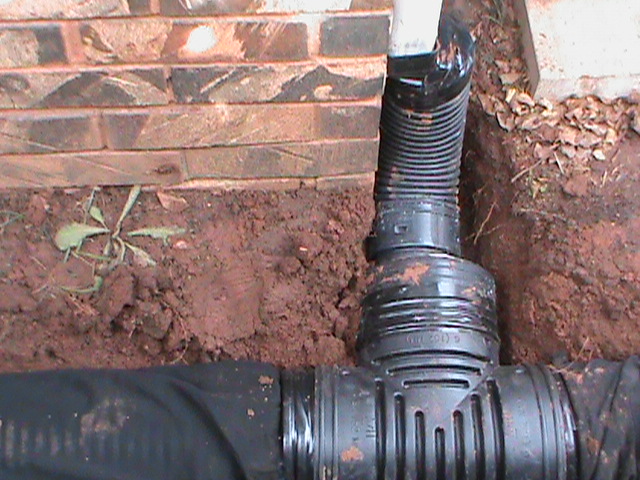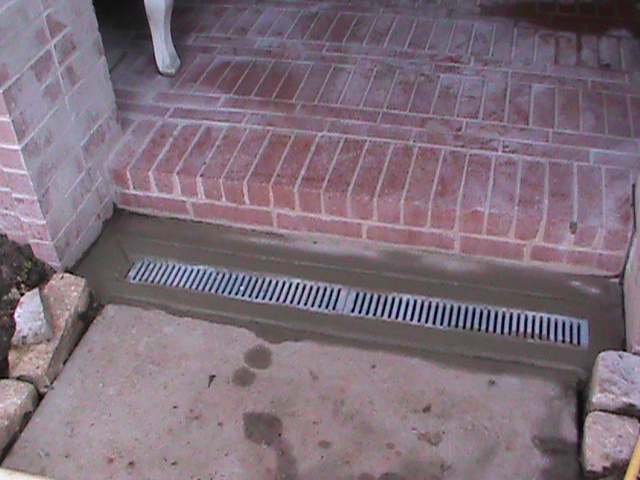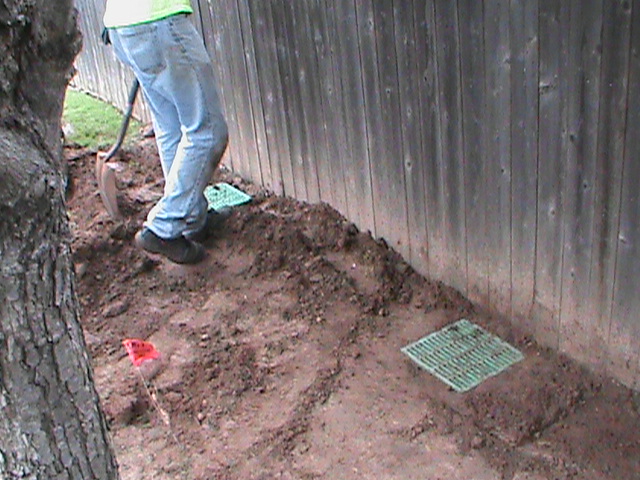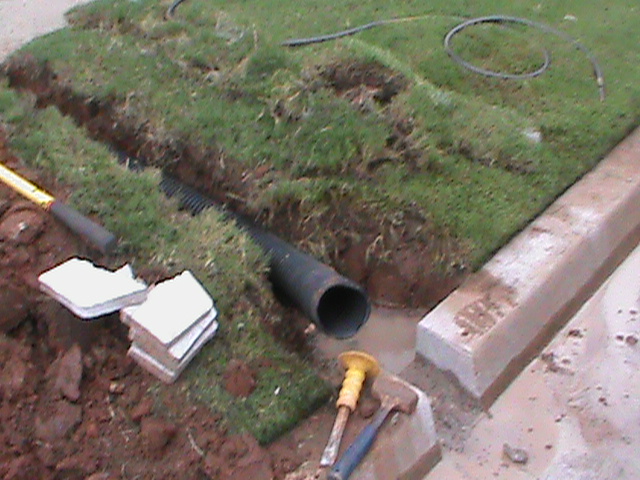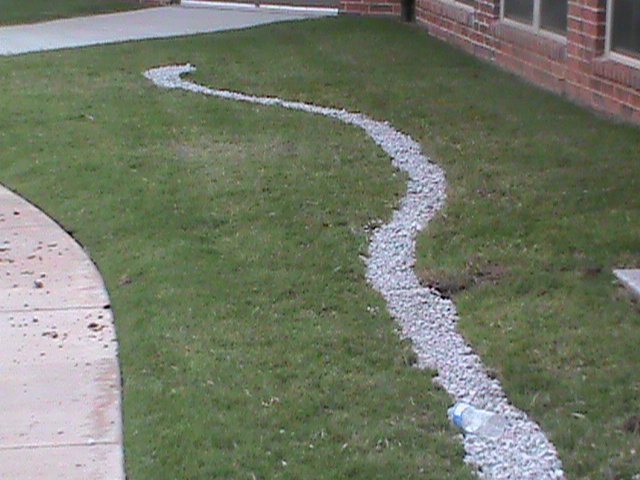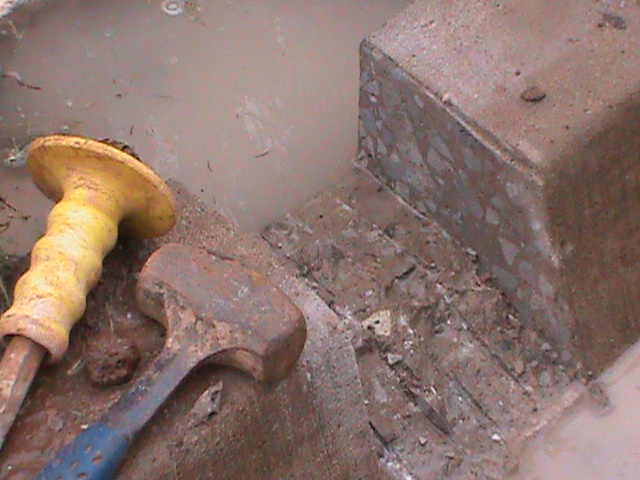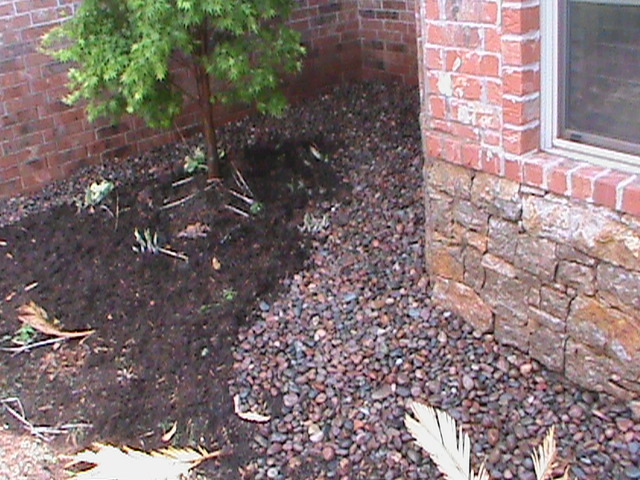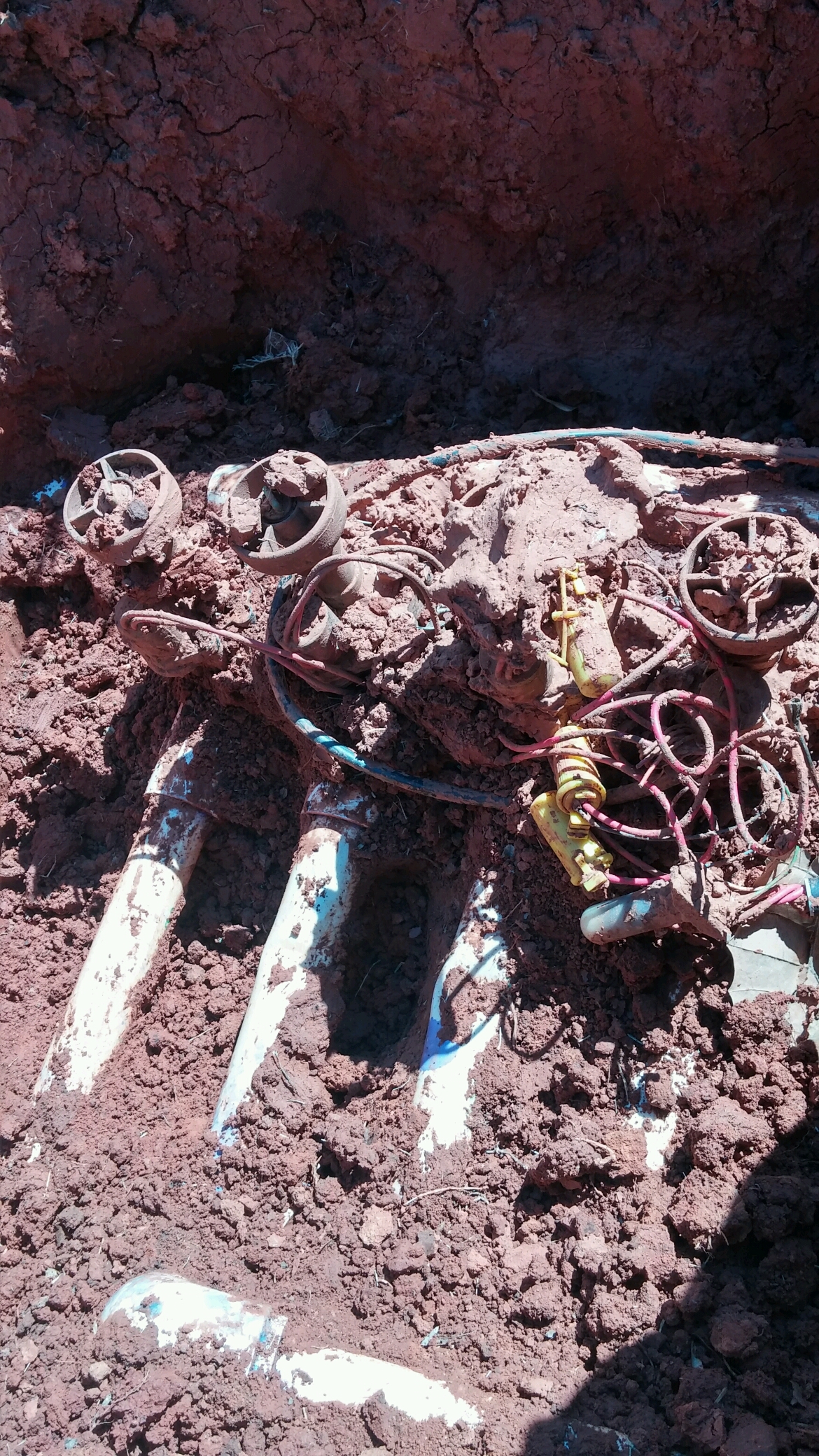Just what is a "
French Drain?" Many times people incorrectly
 - Perforated French Drain Pipe
|
| |
The dirt that was taken out to make the trench is hauled away. It is replaced by some type of small stone or gravel depending on what is desired or available. I prefer crushed 1 inch lime stone. It is the most economical option in my area. Pea Gravel or some other type of small stone can work just as well. The lime-stone or gravel is placed in the trench on top of the perforated
Drain Pipe and filled all the way to the surface (ground level). In some cases where the
French Drain needs to be deep or is being placed in sandy soil, a special trench liner must be placed in the trench before the perforated
Drain Pipe or the Gravel are installed. This helps maintain the integrity of the trench over time. It also increases the cost of the
French Drain and the amount of time to install it. I install a trench liner in a
French Drain about 20% of the time. Most of the time a liner in not needed.

- French Drain March 2011
A
French Drain is designed to handle a large volume of water and cover a large area. The Drain is anyplace the trench goes. It has many applications and can be used in many situations. It can be installed by itself or incorporated into a
Drainage System with
Surface Drains or Gutter Down-Spouts connected to it.
The main downfall of a
French Drain is that they, for the most part aren't very pretty. They don't look very nice in a yard once they are completed.
Depending on the area the
French Drain is installed and the type of grass around the
French Drain, will dictate whether grass grows over the lime stone. Grass can grow up and through the gravel in the
French Drain over time eventually covering the gravel. This is Ok. It won't have a measurable effect on the performance of the
drain.
 - French Drain
|
| |
DONT COVER THE GRAVEL IN THE
FRENCH DRAIN WITH DIRT. THE
FRENCH DRAIN WON'T WORK IF THE TRENCH IS CLOGGED WITH DIRT. DON'T EVEN INSTALL IT IF YOU ARE GOING TO COVER IT UP WITH DIRT.
DECORATIVE STONE CAN BE USED TO COVER A
FRENCH DRAIN AND THEY LOOK GREAT AND LAST A LIFETIME.
The French Drain Installation we did this week was a little more difficult than normal. Many times the route that a Perforated
French Drain Pipe must travel to its exit point is not very easy from an installation point of view.
French Drains may have to travel through tree roots, (big ones) under sidewalks, through retaining walls, around swing sets or dog kennels or Mom's Prize Rose Bush. The 4 inch
French Drain we installed this week was in
Oklahoma City south of 23rd in an old part of town where all the houses were old 2 or 3 story homes with lots of huge Elm Trees. The Elm Tree in Question actually was just an old stump that had been topped out but not completely removed. They left the roots just for us! The roots were growing into the homes foundation and were right in the way of the path of the
French Drain. Forty feet of solid Elm Roots and 4 chain-saw blades later
CMG was successful in running a new
French Drain through a tree stump. Yuck! "Well you gotta do what you gotta do!"

- French Drain with colored river rock
A little info about
French Drain Pipe and Tree Roots. Normally tree roots don't seek out and penetrate
French Drain Pipe. Tree roots seek moisture and residual water that may stay inside
Solid Drain Pipe.
French Drain Pipe is perforated. Water that does not reach the exit point of the
French Drain will seep out of the Pipe into the surrounding dirt.
Solid Drain Pipe that is used with
Surface Drains can be penetrated and eventually clogged by roots if the pipe does not have good slope or "Fall". If the solid pipe does not drain well and has residual water, tree roots will seek it out.
Check out our most
popular blog!
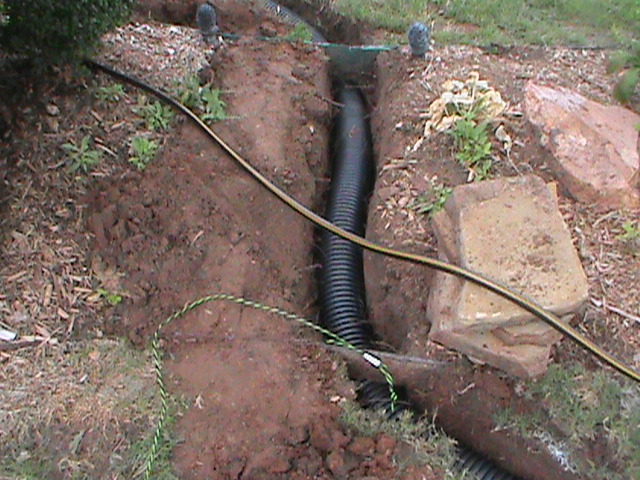
- Drain Pipe running from French Drain to the street in Oklahoma City
Drainage Systems are designed to protect your home or business from
standing water.
Storm-Water Runoff can cause damage in many ways. Water from your gutters can seep down into your home's foundation if it has no good way to
drain off. If the temperature then drops below freezing, the water around your foundation can freeze and cause serious damage to the home's foundation. Foundation repair can cost more than a
Drainage System.
Drainage Systems typically make use of ,
French Drains,
Surface Drains, or
Channel Drains. Depending on the
Drainage Problem, A
Drainage System may utilize one or several types of
Drains.
CMG might install, for example, A
Surface Drain in the middle of a driveway that runs to a gutter that is connected into the
drain pipe. The
Drain Pipe might continue to a
French Drain running parallel to a homes foundation. Next the
drain pipe might continue to a
channel drain cutting across a sidewalk. The
Drain pipe might then reach its exit point running out through a curb fitting installed and cemented through the curb.
A
Surface Drain basically is a basin that has a grate on the top. A
drain pipe is connected to the basin below ground. The water flows in through the grate and down into the basin. The water then exits the Basin through the
Drain Pipe and move toward the exit point of the
Drainage System.
Surface Drains are designed to handle water that accumulates in a low areas. These areas should not be too large or broad, and the water that drains into a
surface drain should not be moving very fast.
Surface Drains can become overwhelmed if they are placed in an area that must move a large volume of water, quickly. Selecting the correct
drain for the specific
drainage problem is a benefit that
CMG provides through twenty years of experience.
